I have a collection of data over several studies. For each study I am interested about the mean of a variable by gender, and if this significantly differs. For each study I have the mean and 95% confidence intervals for both males and females.
What I would like to do is something similar to this:

I have used several flavours of dotplots (dotplot, dotplot2, Dotplot) but did not quite get there.
Using Dotplot from Hmisc I managed to have one series and its errorbars, but I am at a loss on how to adding the second series.
I used Dotplot and got the vertical ending of the error bars following advice given here.
Here is a working example of the code I am using
data<-data.frame(ID=c("Study1","Study2","Study3"),avgm=c(2,3,3.5),avgf=c(2.5,3.3,4))
data$lowerm <- data$avgm*0.9
data$upperm <- data$avgm*1.1
data$lowerf <- data$avgf*0.9
data$upperf <- data$avgf*1.1
# Create the customized panel function
mypanel.Dotplot <- function(x, y, ...) {
panel.Dotplot(x,y,...)
tips <- attr(x, "other")
panel.arrows(x0 = tips[,1], y0 = y,
x1 = tips[,2], y1 = y,
length = 0.05, unit = "native",
angle = 90, code = 3)
}
library(Hmisc)
Dotplot(data$ID ~ Cbind(data$avgm,data$lowerm,data$upperm), col="blue", pch=20, panel = mypanel.Dotplot,
xlab="measure",ylab="study")
This plots three columns of data, the average for males (avgm), and the lower and upper bound of the 95% confidence interval (lowerm and upperm). I have other three series, for the same studies, that do the same job for the female subjects (avgf, lowerf, upperf).
The results I have look like this:

What is missing, in a nutshell:
adding a second series (avgf) with means and confidence intervals defined on three other variables for the same studies
adding some vertical jitter so that they are not one on top of the other but the reader can see both even when they overlap.
